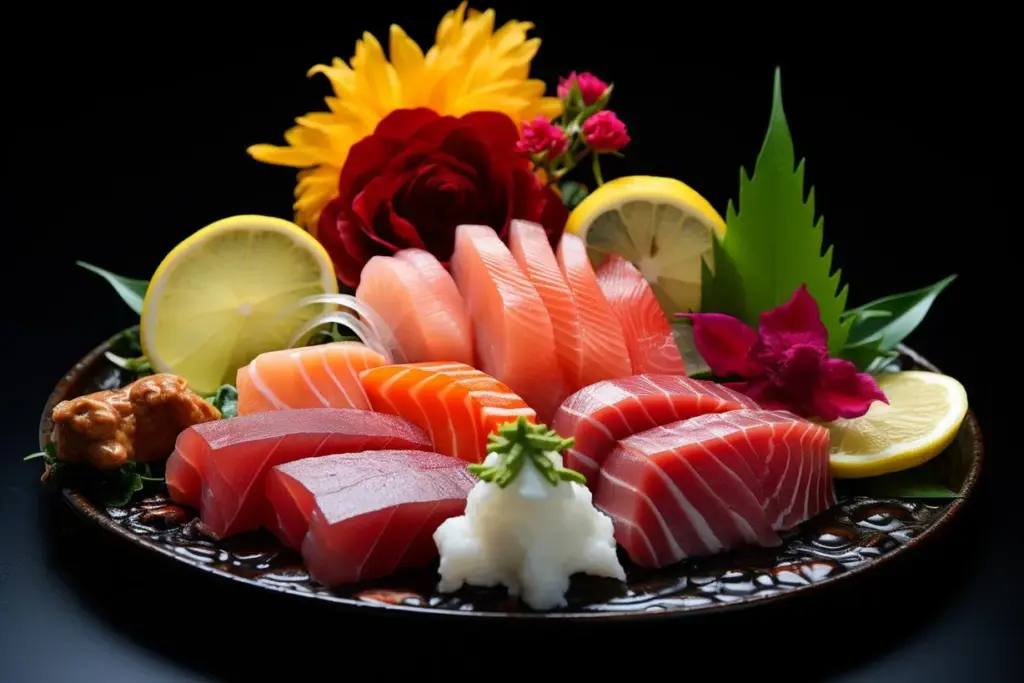The Secrets of Traditional Japanese Sushi and Sashimi
Japanese cuisine offers a deep dive into a culture rich in history, tradition, and meticulous craftsmanship. Among its culinary treasures, sushi and sashimi stand out as iconic representations of this vibrant culture. These dishes have captivated food lovers around the world not only because of their flavors but also due to the craftsmanship involved in their creation.
Understanding the History of Sushi and Sashimi
The journey of sushi and sashimi dates back centuries to a time when the methods of preserving fish were rudimentary yet ingenious. Originally, fish were stored in fermented rice to keep them from spoiling. This method gradually evolved into the modern-day sushi, where fresh fish and rice are combined with various other ingredients.
Sashimi, on the other hand, emphasizes purity and simplicity. Known as the art of serving raw fish and seafood, sashimi underscores the Japanese belief in appreciating natural flavors without excessive seasoning.
The Significance of Ingredients
The foundation of excellent sushi and sashimi starts with the quality of ingredients. Freshness is paramount—only the freshest fish can deliver the authentic taste and texture required. In addition, Japanese rice, specifically short-grain variety, is pivotal for sushi as it provides the right stickiness and flavor profile when seasoned with rice vinegar, sugar, and salt.
Other crucial ingredients include nori (seaweed), wasabi, pickled ginger, and soy sauce. Each component is selected with utmost care to enhance the overall dining experience.
The Art of Sushi Making
Crafting sushi is nothing short of an art form. Sushi chefs undergo rigorous training, often for years, to master the skills required to prepare this delicate dish. Whether it’s the precise slicing of fish or the exact measurement of rice and vinegar, attention to detail is paramount.
Sushi types vary from nigiri (a slice of fish atop a rice ball) to maki (rolled sushi with seaweed) and temaki (hand-rolled sushi cones). Each type demands unique skills to achieve the perfect balance of flavors and textures.
Exploring Sashimi’s Pureness
Sashimi’s simplicity is deceiving; it requires the highest quality fish and the precision of a skilled chef. The fish is sliced into thin, delicate pieces that melt in the mouth and deliver unadulterated flavors. Eating sashimi is about savoring the fish’s natural sweetness, enhanced by a dip in soy sauce and a touch of wasabi.
Key types of sashimi include maguro (tuna), sake (salmon), and ika (squid). Each offers a unique texture and taste that reflects the rich biodiversity of Japan’s surrounding waters.
The Cultural Significance
Sushi and sashimi contribute significantly to Japan’s cultural heritage. They represent not just food, but an embodiment of Japanese values such as precision, discipline, and respect for nature. As part of Japanese etiquette, sushi is often enjoyed with a certain decorum—using chopsticks or hands, dipping fish-side down in soy sauce to prevent the rice from absorbing too much, and appreciating each bite mindfully.
Moreover, the settings in which these dishes are enjoyed, from bustling sushi bars to serene sushi restaurants, elevate the dining experience, reflecting the harmonious blend of social interaction and gastronomic delight.
Health Benefits
One of the reasons sushi and sashimi have gained worldwide popularity is their health benefits. Packed with high-quality protein, omega-3 fatty acids, and various vitamins and minerals, these dishes contribute to a balanced diet. The combination of fish, rice, vegetables, and seaweed provides essential nutrients that support heart health, brain function, and overall well-being.
Additionally, the practice of using raw ingredients means there is minimal loss of nutrients that might occur during cooking, making sushi and sashimi a wholesome choice for health-conscious food enthusiasts.
Experiencing Sushi and Sashimi in Japan
For the ultimate sushi and sashimi experience, traveling to Japan is a must. From the bustling Tsukiji Fish Market in Tokyo, where the freshest seafood can be savored at dawn, to the high-end sushi-ya (sushi restaurants) that showcase the pinnacle of sushi craftsmanship, Japan offers a myriad of opportunities to indulge in these culinary gems.
Tourists can partake in sushi-making classes guided by master chefs, explore regional variations of sushi, and even participate in seasonal festivals dedicated to seafood. The richness of these experiences adds depth to the understanding and appreciation of sushi and sashimi, making a visit to Japan a pilgrimage for food lovers.
Encouraging Culinary Travel
Traveling for food is a rewarding endeavor. It opens up new cultural understandings, culinary techniques, and tastes that are impossible to experience fully without immersing oneself in the source. Japan, with its deep culinary traditions and high esteem for gastronomy, is a premier destination for those seeking both adventure and gastronomic enlightenment.
By embarking on a journey to explore the secrets of traditional Japanese sushi and sashimi, travelers not only satisfy their taste buds but also enrich their perspectives on food culture, history, and the fine details that elevate simple ingredients to extraordinary culinary art.



